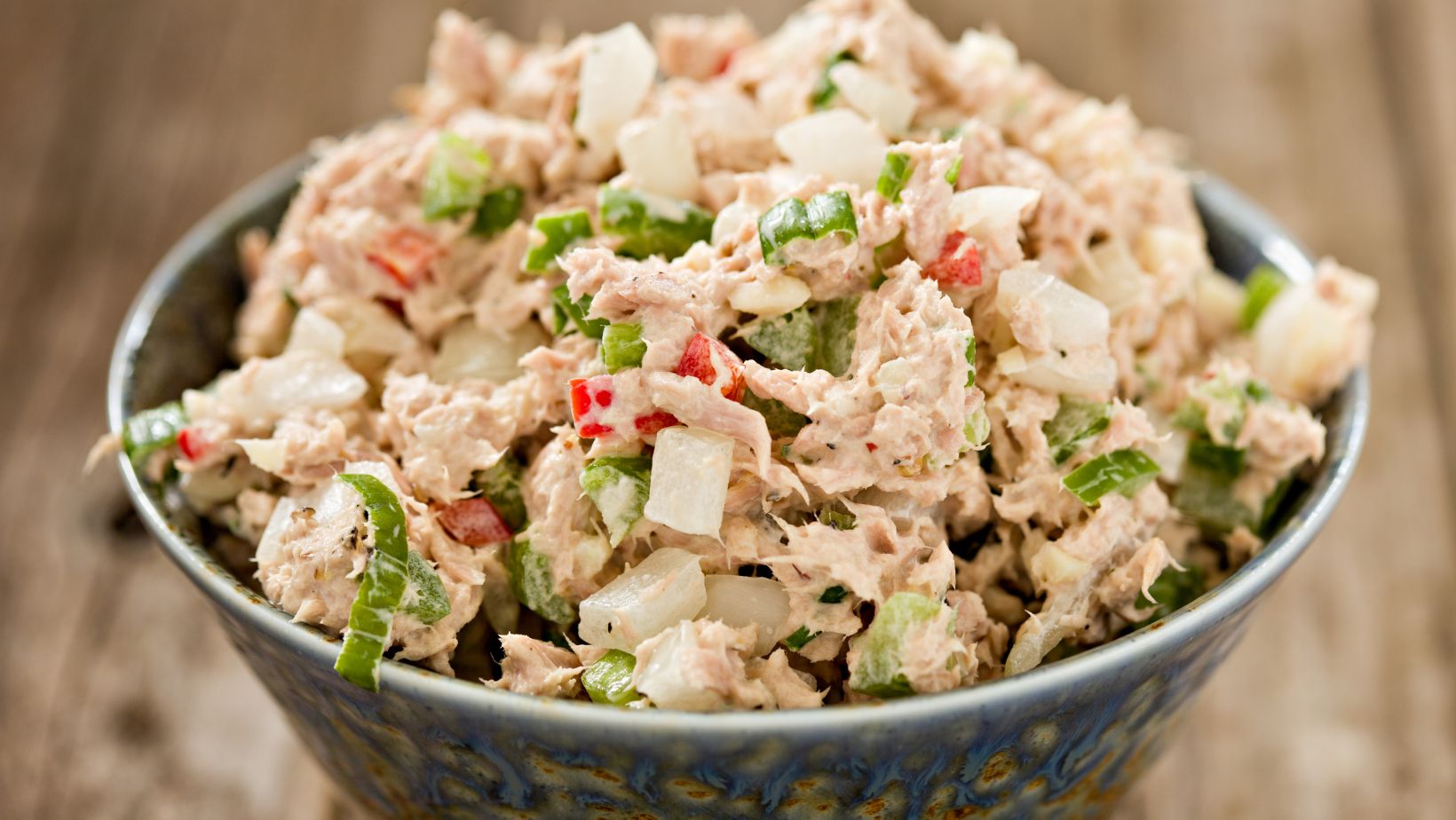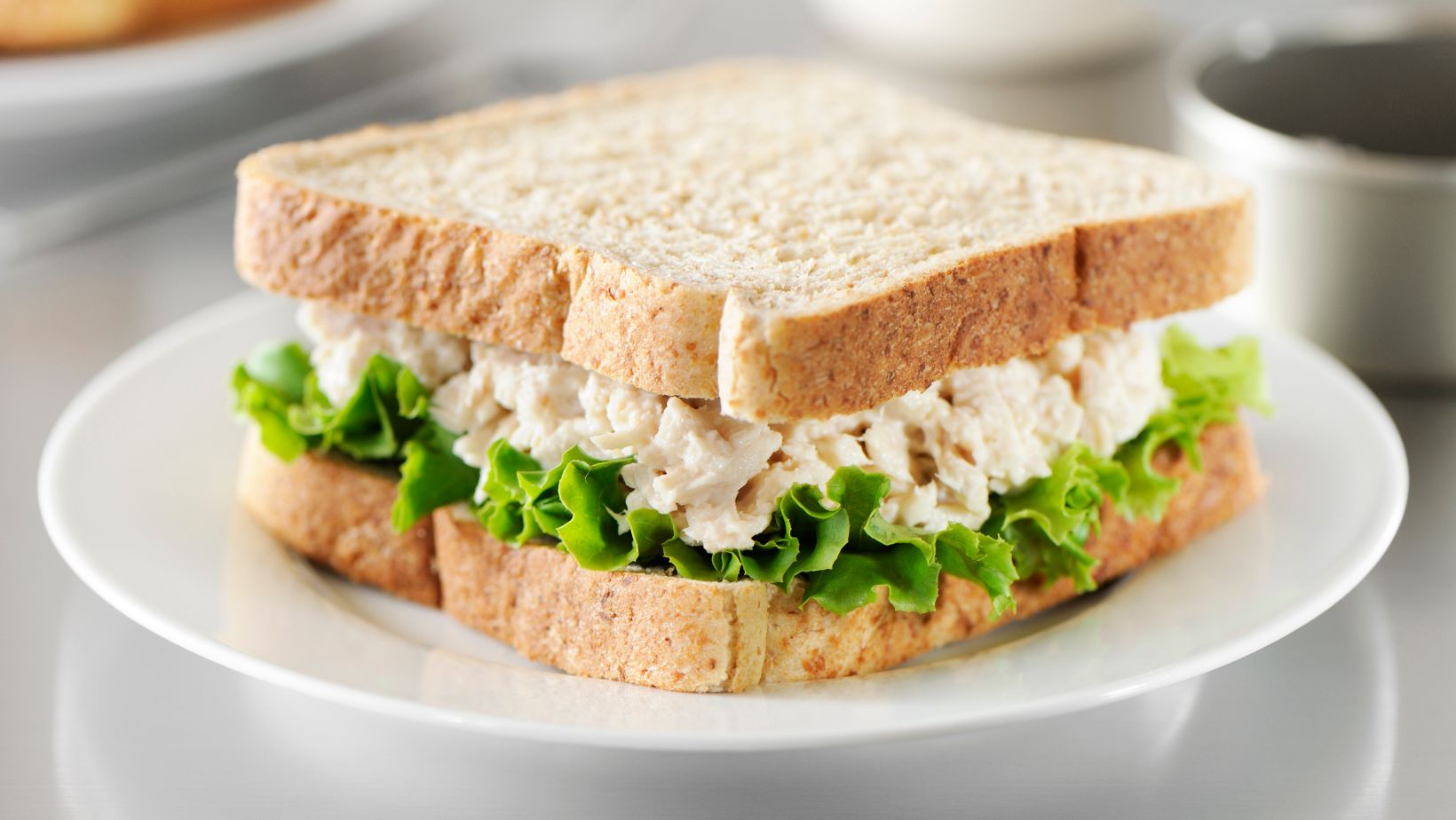Key Takeaways
-
- Tuna’s Nutritional Benefits: Tuna is a low-calorie, high-protein food rich in omega-3 fatty acids, supporting heart health and providing essential vitamins and minerals.
-
- Healthy Ingredient Swaps: Substitute heavy creams with Greek yogurt, replace regular pasta with whole grain options, and incorporate fresh vegetables to enhance nutritional value without sacrificing taste.
-
- Variety of Recipes: Enjoy diverse healthy tuna casserole recipes, including classic variations, Mediterranean styles, and vegan adaptations, catering to different dietary preferences.
-
- Fresh Vegetables Matter: Incorporating a variety of fresh vegetables not only boosts the nutritional profile but also adds flavor and color to the dish, making it more appealing.
-
- Cooking Techniques for Health: Opt for baking instead of frying and use steaming or minimal oil sautéing to retain nutrients while reducing unhealthy fats in casseroles.
-
- Diverse Dietary Needs: These healthy tuna casseroles are adaptable for gluten-free and dairy-free diets, ensuring that everyone can enjoy a comforting and nutritious meal.
Tuna casserole has long been a beloved comfort food, but it often gets a bad rap for being unhealthy. With a few simple tweaks, it can transform into a nutritious meal that satisfies cravings without the guilt. Packed with protein and healthy fats, tuna offers a wealth of benefits, making it the perfect star ingredient for a wholesome casserole.
In this article, readers will discover a variety of healthy tuna casserole recipes that are easy to prepare and delicious. From incorporating fresh vegetables to swapping out heavy creams for lighter alternatives, these recipes prove that comfort food can be both tasty and nutritious. Whether it’s a busy weeknight or a cozy family gathering, these dishes are sure to please everyone at the table.
Healthy Tuna Casserole Recipes
Healthy tuna casserole recipes combine convenience and nutrition. Tuna offers high protein content, essential omega-3 fatty acids, and various vitamins and minerals. By modifying traditional tuna casserole, nutritious ingredients enhance flavor and health benefits.
Recipes incorporate fresh vegetables like spinach, bell peppers, and carrots, boosting fiber and nutrients. Substituting lighter ingredients like Greek yogurt or low-fat cheese for heavy creams reduces calories without sacrificing taste. These adaptations make tuna casserole a balanced option for families.
When crafting a healthy tuna casserole, several variations exist. Choices range from whole grain pasta to quinoa as the base, providing complex carbohydrates. For added flavor, spices such as garlic powder and oregano improve taste without extra calories.
Incorporating options like chickpeas or beans increases the dish’s protein and fiber, making it even more filling. Healthy tuna casserole recipes cater to diverse dietary needs, offering gluten-free and dairy-free alternatives. These recipes not only satisfy cravings but also support wellness goals and fit seamlessly into a balanced diet.
Benefits of Tuna in Your Diet
Tuna serves as a valuable addition to a balanced diet, offering multiple health benefits alongside rich nutritional value. Incorporating tuna into meals supports wellness and provides a variety of essential nutrients.
Nutritional Value of Tuna
 Tuna is low in calories while being high in protein, making it an ideal food for maintaining muscle mass. A 6-ounce serving contains approximately 40 grams of protein. It provides vital nutrients such as:
Tuna is low in calories while being high in protein, making it an ideal food for maintaining muscle mass. A 6-ounce serving contains approximately 40 grams of protein. It provides vital nutrients such as:
| Nutrient | Amount per 6 ounces |
|---|---|
| Calories | 200 |
| Protein | 40 grams |
| Omega-3 Fatty Acids | 1.5 grams |
| Vitamin D | 130% of DV |
| Selenium | 70% of DV |
Tuna also contains B vitamins, including B6 and B12, which play essential roles in energy metabolism and brain function.
Health Benefits of Tuna
Tuna promotes heart health due to its high omega-3 fatty acid content, which lowers triglycerides and supports overall cardiovascular function. Regular consumption can reduce the risk of heart disease. Tuna also supports cognitive function, as omega-3 fatty acids contribute to brain health. Additional health benefits include:
-
- Weight Management: High protein content aids in satiety, reducing overall calorie intake.
-
- Muscle Growth: The amino acids from tuna support muscle repair and growth.
-
- Immune Support: Selenium enhances immune function and helps combat inflammation.
-
- Bone Health: Vitamin D supports calcium absorption, promoting strong bones.
Incorporating tuna into meals expands dietary diversity while providing nutritional advantages, making it a wise choice for those prioritizing health.
Key Ingredients for Healthy Casseroles
Healthy casseroles rely on nutritious ingredients that enhance both flavor and health benefits. Choosing the right components, such as whole grains and fresh vegetables, is essential for creating satisfying and wholesome meals.
Choosing Whole Grains
Whole grains serve as a nutritious base for casseroles, offering more fiber and nutrients compared to refined grains. Options include whole grain pasta, quinoa, or brown rice. Whole grain pasta contains about 6 grams of fiber per serving, improving digestive health. Quinoa is a complete protein, providing all nine essential amino acids, and has roughly 8 grams of protein and 5 grams of fiber per cooked cup. Using whole grains can enhance satiety and promote weight management.
Adding Fresh Vegetables
Fresh vegetables are crucial for boosting the nutritional profile of casseroles. They add vitamins, minerals, and fiber, improving overall health benefits. Adding vegetables like spinach, bell peppers, broccoli, and carrots can introduce essential nutrients like vitamin A, vitamin C, and potassium. For instance, one cup of chopped spinach contains approximately 7 calories and 1 ounce of protein. Including a variety of colors from different vegetables can also maximize the range of antioxidants in the dish, supporting immune health and overall wellness.
Popular Healthy Tuna Casserole Recipes
Explore these nutritious and easy-to-make tuna casserole recipes that deliver flavor while supporting health goals.
Recipe 1: Classic Healthy Tuna Casserole
This classic recipe emphasizes whole grain pasta as a base and combines it with canned tuna, fresh vegetables, and a creamy sauce made from Greek yogurt and low-fat cheese. Ingredients typically include:
-
- Whole Grain Pasta: Provides fiber and essential nutrients.
-
- Canned Tuna: Offers high-quality protein and omega-3 fatty acids.
-
- Mixed Vegetables: Such as peas and carrots, enhance the nutritional profile and add vibrant color.
Prepare by cooking the pasta and mixing it with the tuna and vegetables. Stir in the yogurt and cheese, season with garlic powder and black pepper, then bake until golden and bubbly. This recipe serves 4 and offers a balanced meal.
Recipe 2: Mediterranean Style Tuna Casserole
This Mediterranean version infuses traditional flavors while maintaining a healthy spin. Key ingredients include:
-
- Quinoa: Acts as a protein-packed base, rich in fiber.
-
- Tuna: Delivers essential fatty acids and protein.
-
- Spinach and Feta: Introduces greens for added vitamins and a tangy flavor.
Combine cooked quinoa with tuna, sautéed spinach, and crumbled feta. Season with oregano and lemon juice for a fresh taste, then bake for about 20 minutes. This recipe serves 4 and promotes wholesome eating with a Mediterranean flair.
Recipe 3: Vegan Tuna Casserole
This vegan adaptation uses chickpeas or lentils as a tuna substitute, creating a protein-rich, plant-based dish. Essential components include:
-
- Chickpeas or Lentils: Provide significant protein and fiber.
-
- Brown Rice or Cauliflower Rice: Serves as a nutritious base, adding texture.
-
- Dairy-Free Cream Sauce: Made with cashews or coconut milk for a creamy consistency without dairy.
Mix cooked rice with mashed chickpeas, fresh vegetables, and the cream sauce. Season with dill and nutritional yeast for a cheesy flavor. Bake until golden, for about 25 minutes. This recipe serves 4 and caters to vegan diets while maintaining a comforting feel.
Tips for Making Healthy Tuna Casserole
Creating a healthy tuna casserole involves strategic ingredient choices and cooking methods. These tips focus on substitutions and techniques that enhance both nutrition and flavor.
Substitutions for Healthier Options
-
- Use Greek yogurt instead of sour cream or heavy cream. Greek yogurt adds creaminess while reducing calories and fat content.
-
- Choose whole grain pasta over regular pasta. Whole grain options provide more fiber and nutrients, which promote digestive health.
-
- Incorporate fresh vegetables like spinach, bell peppers, or kale. These vegetables boost vitamins, minerals, and antioxidants, enhancing the dish’s overall health profile.
-
- Swap regular cheese for low-fat cheese or nutritional yeast. These alternatives offer similar flavors with fewer calories and fat.
-
- Opt for quinoa or brown rice instead of white rice. These grains are rich in fiber and protein, contributing to satiety.
-
- Add legumes such as chickpeas or black beans. Including legumes increases protein and fiber, making the casserole more filling.
-
- Use vegetable broth in place of cream-based sauces. Vegetable broth maintains flavor while cutting down on fat.
Cooking Techniques for Healthier Dishes
-
- Steam vegetables before adding them to the casserole. Steaming preserves nutrients while enhancing flavor and texture.
-
- Bake instead of frying. Baking allows for healthier cooking without unnecessary oils, reducing overall fat content.
-
- Sauté veggies in a non-stick pan using minimal oil. This method retains nutrients while preventing added fats.
-
- Layer flavors with herbs and spices. Incorporating garlic, oregano, or thyme enhances taste without extra calories.
-
- Limit added sugars and sodium. Use low-sodium broth and seasonings for better health benefits.
-
- Bake at lower temperatures for longer periods. Slower cooking helps develop flavors without excessive fat.
-
- Use a portion control method when serving. This practice encourages balanced servings that promote healthy eating habits.
Dietary preferences
Healthy tuna casserole recipes offer a delicious way to enjoy comfort food without compromising nutrition. By incorporating wholesome ingredients like fresh vegetables and whole grains, these dishes provide essential nutrients while satisfying cravings. The versatility of tuna allows for endless variations, making it easy to cater to different dietary preferences.
With simple modifications, anyone can transform traditional recipes into nutritious meals that support wellness goals. Whether it’s a classic version or a vegan twist, healthy tuna casseroles can fit seamlessly into a balanced diet. Embracing these recipes not only enhances flavor but also contributes to overall health, proving that comfort food can indeed be both nourishing and enjoyable.
